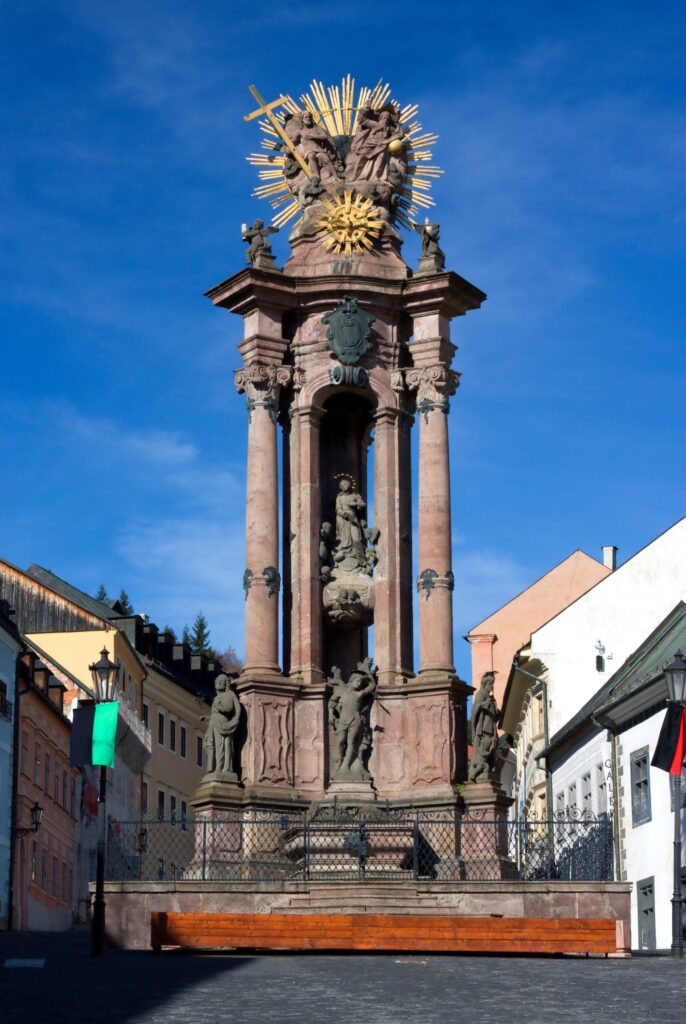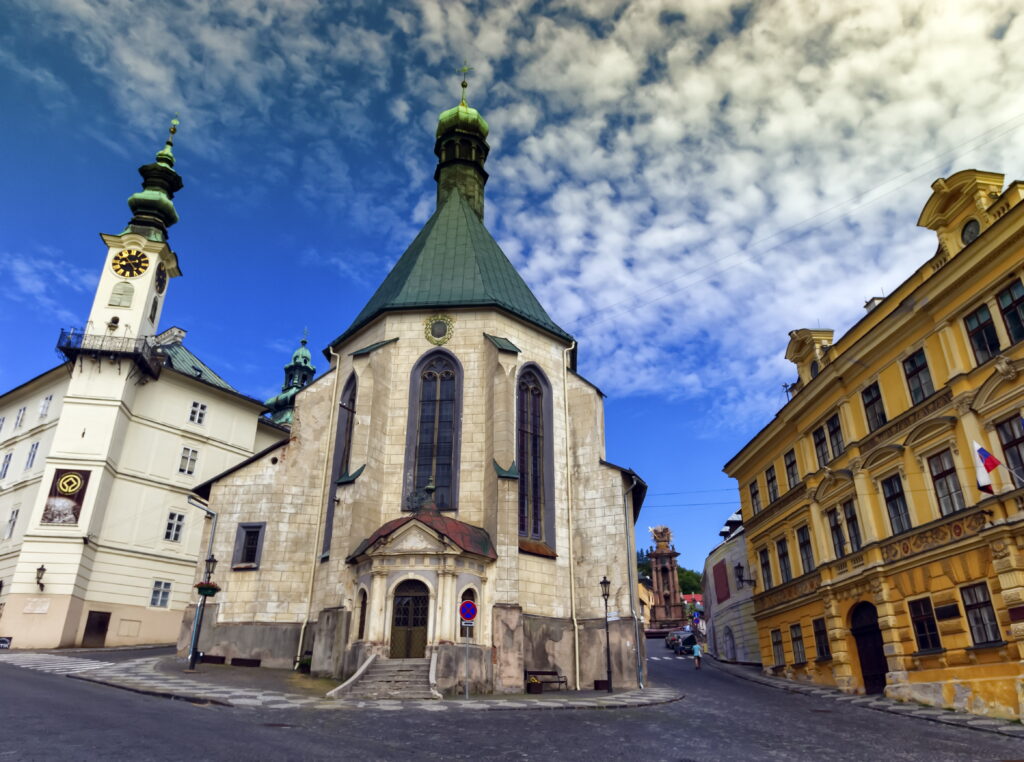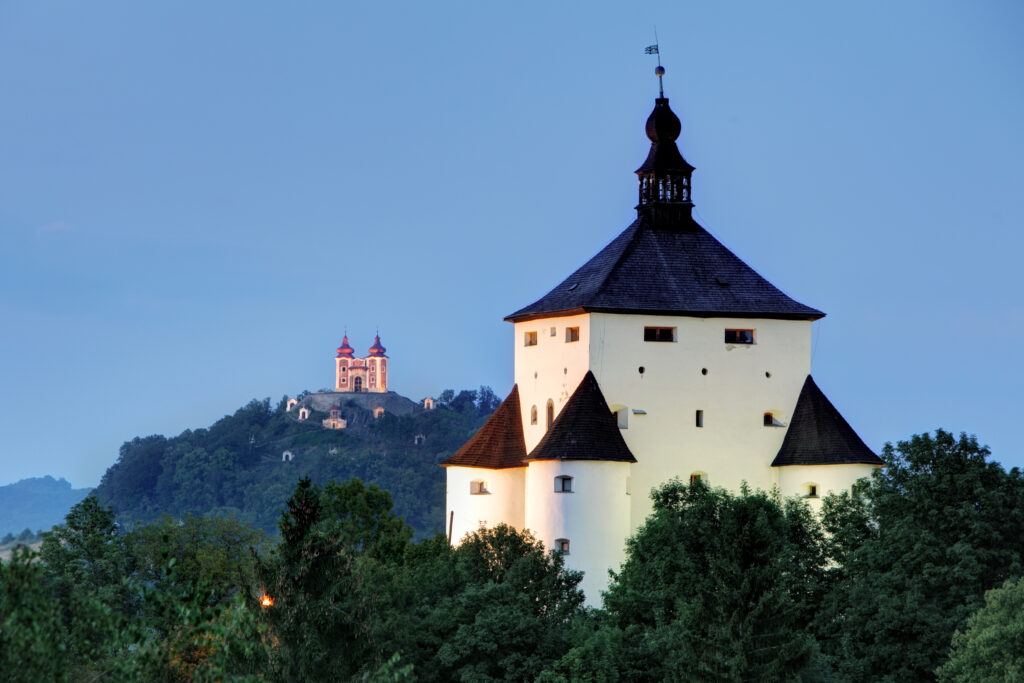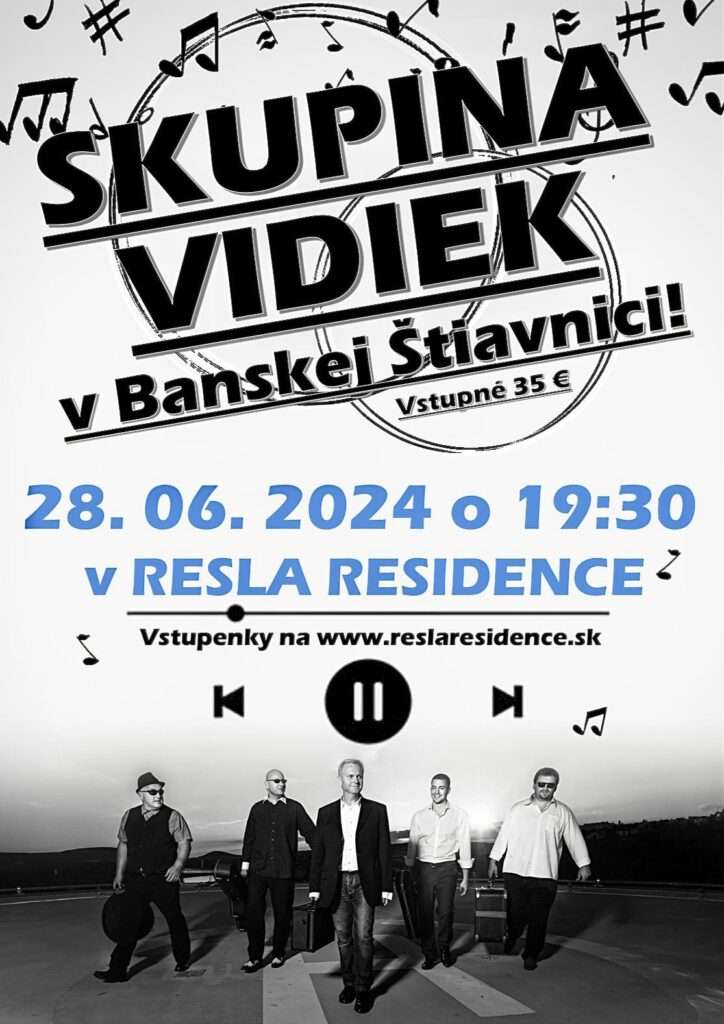Banská Štiavnica and surroundings
In the close distance of the Resla Residence you will find many natural monuments and sightseeing spots:
- Štiavnica Mountains
The Štiavnica Mountains protected landscape area is located in the districts of Banská Štiavnica, Žiar nad Hronom, Žarnovica, Zvolen, Levice and Krupina. - Sitno
Sitno is the highest peak of the Štiavnica Mountains and represents a significant landscape feature. From its top is a wide circular view. Steep rock walls made of andesite protect the top from three sides. - Botanic Garden
The 3.5-hectare garden was planted between 1838 and 1861 by the university professors, especially R. Feistmantel, K. Wagner, F. Illés, Ľ. Black, E. Vadas. - Stone Sea in Vyhne
Nature reserve on the slope of Kamenná above the village Vyhne. The reason for protection is the largest stone sea of Carpathian volcanics in Slovakia, created by the disintegration of the rhyolite stream at very low temperatures. - Arboretum Kysihýbel
It was founded in 1900 by an assistant at the Mining and Forestry Academy J.Tužoň on the area of 7.73 ha. The arboretum is divided into 350 areas measuring 15×15 m with 282 species of trees, mainly from North America, planted in this area.
You can also visit many from our architectural monuments:
- St. Trinity Square and the sculpture of St. Trinity
The square was formed at the beginning of the 16th century and forms the core of the city. An important role in its formation was played by the town hall building and the church of St. Catherine. - Historic Town Hall
Originally a single-storey Gothic house from the 14th century, in which the town council met, was rebuilt in 1488 into a two-storey building. At the beginning of the 16th century, the chapel of St. Anna, which was demolished in the 18th century and a statue of the Virgin Mary was built in its place. - Kammerhof
Kammerhof is one of the largest building complexes in the city. It was built in the middle of the 16th Century. - Old Castle
At the beginning of the 13th century, a three-nave Romanesque basilica was built on the promontory of the Paradajz Hill. In the 15th century, this church of the Virgin Mary with the adjacent cemetery was surrounded by a wall. In the 1640s, it was rebuilt into an anti-turkish fortress. - Knocking Tower Klopačka
It is a two-storey tower-like Renaissance-Baroque building from 1681. In the Klopačka tower, there is a device that knocked the miners’ time to start mining. - Church of St. Catherine
Late Gothic Church of St. Catherine was built in the years 1443 – 1491. It has one nave vaulted with a star vault. - Evangelic Church
The church was built in 1794 – 1796 home builder F. Sivák according to the project of the Viennese architect J. Tallher. It does not have a tower, it is located in a street area. - Church of the Assumption of the Blessed Virgin Mary
Originally a three-nave Romanesque basilica from the 1930s, it underwent several building modifications. - New Castle
Upon arrival in Banská Štiavnica, visitors are attracted by one of the most beautiful landmarks of the town, New Castle. - Piarg Gate
Renaissance one-storey building, which was modified in the Baroque style in the 18th century. It was built in 1554 as part of the city wall system, which consisted of a double wreath of fortifications. - Objects of the Mining Academy
The Mining Academy was founded by a decision of Queen Maria Theresa in 1762 and began its activities in 1764. It was the first school of its kind in the world and operated in Banská Štiavnica until 1919. - Calvary
The complex of sacral buildings sensitively placed in the natural environment forms a unique example of the harmony of nature and human ingenuity.







